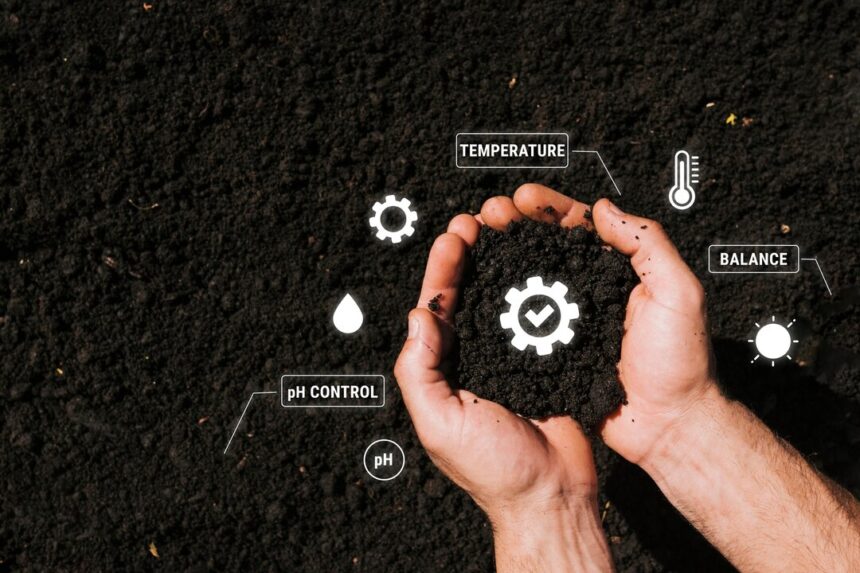Soil health is the foundation of successful farming. Conducting soil tests helps farmers understand the composition, nutrient levels, and overall condition of their soil. With this information, they can make informed decisions to improve soil quality, enhance productivity, and ensure sustainable farming practices. Here’s a step-by-step guide on how to conduct soil tests and use equipment effectively to enhance soil quality.
1. Understanding the Importance of Soil Testing
Soil testing provides valuable insights into nutrient availability, pH levels, and potential contaminants. By understanding your soil’s needs, you can:
- Apply fertilizers efficiently, avoiding overuse.
- Select suitable crops for your soil type.
- Identify deficiencies and correct them promptly.
- Improve soil structure and fertility.
2. Choosing the Right Time for Testing
Conduct soil tests at least once a year, ideally during the off-season or before planting. Avoid testing immediately after applying fertilizers or lime, as this may affect the accuracy of results.
3. Collecting Soil Samples
Proper sample collection is crucial for accurate testing. Follow these steps:
- Select Sampling Areas: Divide your farm into zones based on soil type, crop history, or problem areas.
- Use the Right Tools: A soil auger, spade, or core sampler is ideal for collecting samples.
- Depth of Sampling: For most crops, collect soil from a depth of 15-20 cm. For deeper-rooted plants, consider testing the subsoil.
- Mix Samples: Collect multiple samples from each zone, mix them thoroughly in a clean bucket, and remove debris.
4. Sending Samples to a Laboratory
Pack the mixed soil sample in a clean bag, label it with the zone information, and send it to a reliable soil testing laboratory. Ensure you provide information about your crops and farming practices to get tailored recommendations.
5. Using At-Home Soil Test Kits
For quick results, you can use at-home soil test kits. These kits typically test for pH, nitrogen (N), phosphorus (P), and potassium (K). Follow the manufacturer’s instructions to ensure accurate readings.
6. Interpreting Soil Test Results
Soil test results typically provide:
- Nutrient Levels: Indicates deficiencies in nitrogen, phosphorus, potassium, and other essential nutrients.
- pH Levels: Determines if the soil is acidic, neutral, or alkaline.
- Recommendations: Suggests amendments to correct imbalances.
Consult with an agronomist or extension officer if you need help interpreting the results.
7. Using Equipment to Improve Soil Quality
Once you have the test results, use the following equipment to address soil issues:
Fertilizer Spreaders
Apply the right type and amount of fertilizers to replenish deficient nutrients. Precision fertilizer spreaders ensure even distribution, reducing waste and environmental impact.
Lime Applicators
If the soil is too acidic, use lime to adjust the pH. Lime applicators can evenly distribute powdered or pelletized lime across your fields.
Compost Turners
Enhance soil organic matter by incorporating compost. Compost turners mix and aerate organic materials, speeding up the composting process.
Tillage Equipment
Use tillage equipment, such as plows or harrows, to break compacted soil, improve aeration, and enhance water infiltration. Avoid over-tilling, as it can degrade soil structure.
Irrigation Systems
Efficient irrigation systems, like drip or sprinkler systems, prevent overwatering and waterlogging, which can harm soil quality.
Cover Crop Seeders
Planting cover crops, such as legumes or grasses, can improve soil fertility and structure. Cover crop seeders make it easy to establish these beneficial plants.
Soil Moisture Sensors
Monitor soil moisture levels to optimize irrigation schedules and prevent water stress or over-saturation.
8. Maintaining Soil Health
Improving soil quality is an ongoing process. Regularly test your soil, rotate crops, and adopt conservation practices such as:
- Mulching: Reduces evaporation and protects soil from erosion.
- No-Till Farming: Preserves soil structure and reduces compaction.
- Organic Amendments: Use manure, compost, or biochar to boost organic matter.
Soil testing and the use of proper equipment are vital for improving soil quality and ensuring farm productivity. By understanding the condition of your soil and taking corrective actions, you can create a healthier, more sustainable farming system. Regular monitoring and proactive management will help you reap long-term benefits while preserving the environment.
Join 'Farmers Mag' WhatsApp Channel
Get the latest Farming news and tips delivered straight to your WhatsApp
CLICK HERE TO JOIN






